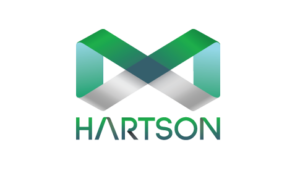The Ultimate Guide to Breaking Into Cloud Architecture: Skills, Certifications, and Career Paths
Introduction
Breaking into the world of cloud architecture might seem daunting, but with the right guidance and resources, it’s entirely within your reach. As businesses rapidly migrate to the cloud to enhance scalability and innovation, the demand for skilled cloud architects has skyrocketed. If you’re eager to embark on this exciting journey, this guide is packed with actionable insights, expert advice, and practical steps to help you succeed.
Understanding Cloud Architecture
What Exactly Does a Cloud Architect Do?
At its core, cloud architecture involves designing and implementing cloud environments that meet an organization’s technical and business requirements. As a cloud architect, you’ll be responsible for:
• Designing Scalable Cloud Solutions: Crafting architectures that can grow with business needs.
• Integrating Systems: Ensuring seamless connectivity between on-premises systems and cloud services.
• Enhancing Security: Implementing robust security measures to protect data and applications.
• Optimizing Costs: Balancing performance and expenses to maximize ROI.
Industry Insight: With Gartner predicting that over 85% of enterprises will adopt a cloud-first strategy by 2025, there’s never been a better time to dive into cloud architecture.
Essential Skills for Aspiring Cloud Architects
1. Mastery of Leading Cloud Platforms
To stand out, you need hands-on experience with at least one major cloud provider:
• Amazon Web Services (AWS): The market leader with a vast array of services.
• Microsoft Azure: A strong contender, especially in enterprises using Microsoft products.
• Google Cloud Platform (GCP): Known for its strengths in data analytics and machine learning.
Labbing Advice: Utilize platforms like AWS Skill Builder, Microsoft Learn, and Google Cloud Skills Boost to access free labs and tutorials. These resources offer interactive, hands-on experiences that simulate real-world scenarios.
2. Solid Understanding of Networking and Infrastructure
A cloud architect must be well-versed in:
• Virtual Networks and Subnets
• Load Balancing and Traffic Management
• Domain Name System (DNS)
• Content Delivery Networks (CDNs)
Actionable Tip: Set up your own virtual networks using free tiers on AWS or Azure to gain practical experience.
3. Proficiency in Programming and Scripting
Familiarity with programming languages and scripting is crucial:
• Languages: Python, Java, or C#
• Scripting Tools: Bash, PowerShell
Labbing Opportunity: Practice automating tasks by writing scripts that manage cloud resources. Use Microsoft Interactive Labs or AWS Cloud9 for a hands-on coding environment.
4. Deep Knowledge of Security and Compliance
Security is non-negotiable in the cloud:
• Encryption Techniques
• Identity and Access Management (IAM)
• Compliance Standards: GDPR, HIPAA, SOC 2
Expert Advice: Engage with labs that focus on security, such as AWS’s Well-Architected Labs or Azure’s Security Center Hands-on Labs.
5. Familiarity with DevOps Practices and Tools
Understanding DevOps enhances your ability to deliver efficient solutions:
• Containerization: Docker, Kubernetes
• CI/CD Pipelines: Jenkins, GitLab CI/CD
Labbing Advice: Use AWS Skill Builder Labs or Azure DevOps Labs to practice setting up CI/CD pipelines and deploying containerized applications.
Certifications to Boost Your Credibility
1. AWS Certified Solutions Architect – Associate
• Why It Matters: Validates your ability to design effective solutions on AWS.
• Preparation Resources: AWS Skill Builder offers free courses and practice exams.
2. Microsoft Certified: Azure Solutions Architect Expert
• Why It Matters: Proves your expertise in designing and implementing Azure solutions.
• Preparation Resources: Leverage Microsoft Learn for guided learning paths and interactive labs.
3. Google Professional Cloud Architect
• Why It Matters: Demonstrates proficiency in designing and managing solutions on GCP.
• Preparation Resources: Use Google Cloud Skills Boost for hands-on labs and courses.
Actionable Tip: Supplement your study with lab environments to apply what you’ve learned in a practical setting.
Charting Your Career Path in Cloud Architecture
Starting Positions to Consider
• Cloud Support Associate
• Junior Cloud Engineer
• Systems Administrator
Labbing Advice: Build a portfolio of projects by completing labs and showcasing them on platforms like GitHub. This tangible proof of your skills can set you apart from other candidates.
Advancing Your Career
• Cloud Engineer
• DevOps Engineer
• Solutions Architect
Expert Recommendation: Seek out challenging labs that simulate complex, real-world problems. This not only hones your skills but also prepares you for higher-level responsibilities.
Reaching the Pinnacle
• Lead Cloud Architect
• Cloud Solutions Manager
• Chief Cloud Officer
Industry Insight: Leadership roles require a mix of technical prowess and strategic vision. Engage in labs that focus on designing large-scale architectures and managing teams.
Enhancing Your Skills Through Labbing
Why Labbing is Essential
Labbing allows you to apply theoretical knowledge in a controlled environment, accelerating your learning and problem-solving abilities.
Top Platforms for Hands-On Experience
• AWS Skill Builder Labs: Offers a range of labs from beginner to advanced levels.
• Microsoft Learn and Interactive Labs: Provides interactive, step-by-step tutorials for Azure services.
• Google Cloud Skills Boost: Features labs and quests to deepen your understanding of GCP.
Actionable Tip: Dedicate time each week to complete labs. Consistency is key to retaining information and building muscle memory.
Building Your Own Lab Environment
Consider setting up a personal lab using:
• Free Tier Accounts: Most cloud providers offer limited free usage.
• Open-Source Tools: Use platforms like Minikube for Kubernetes or LocalStack for AWS services.
Expert Advice: Document your lab exercises and findings. This not only reinforces your learning but also provides material you can share during interviews or on your professional blog.
Leveraging Job Platforms and Hosting Services
Ready to apply your skills in the real world? Check out these resources:
• Discover Remote Cloud Architecture Opportunities on FlexJobs: FlexJobs curates flexible and remote positions, making it easier to find roles that suit your lifestyle.
• Experiment with Cloud Projects Using Hostinger: Hostinger offers affordable hosting solutions perfect for deploying your applications and testing architectures.
Actionable Tip: Use these platforms not just for job hunting but also for networking with professionals and staying updated on industry trends.
Conclusion
Breaking into cloud architecture is an achievable goal with the right approach. By focusing on essential skills, obtaining relevant certifications, and engaging in continuous labbing, you’ll position yourself as a competitive candidate in this thriving field.
Next Steps to Take:
1. Set Up Your Learning Plan: Identify which cloud platform you’ll focus on and gather resources.
2. Engage in Labbing: Start with basic labs and gradually tackle more complex scenarios.
3. Get Certified: Schedule your certification exams to keep yourself accountable.
4. Network and Grow: Join professional communities, attend webinars, and connect with mentors.
Links for Job Seekers and Entrepreneurs
• Find Your Next Cloud Role on FlexJobs
• Launch Your Cloud Projects with Hostinger
Your support through these affiliate links helps us continue providing valuable content at no extra cost to you.




Leave a Reply
Want to join the discussion?Feel free to contribute!